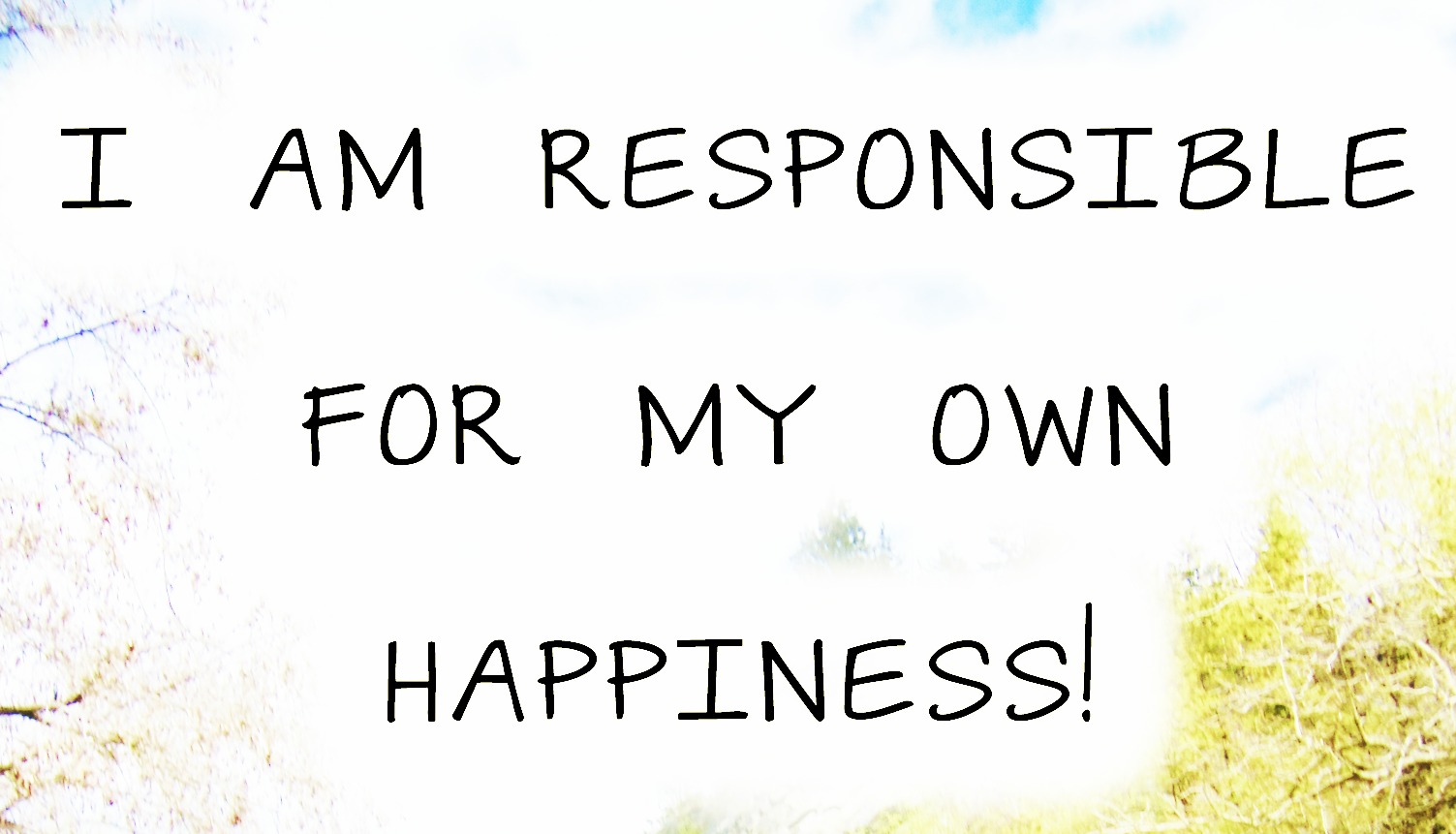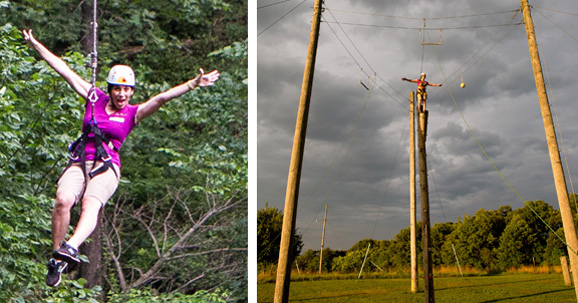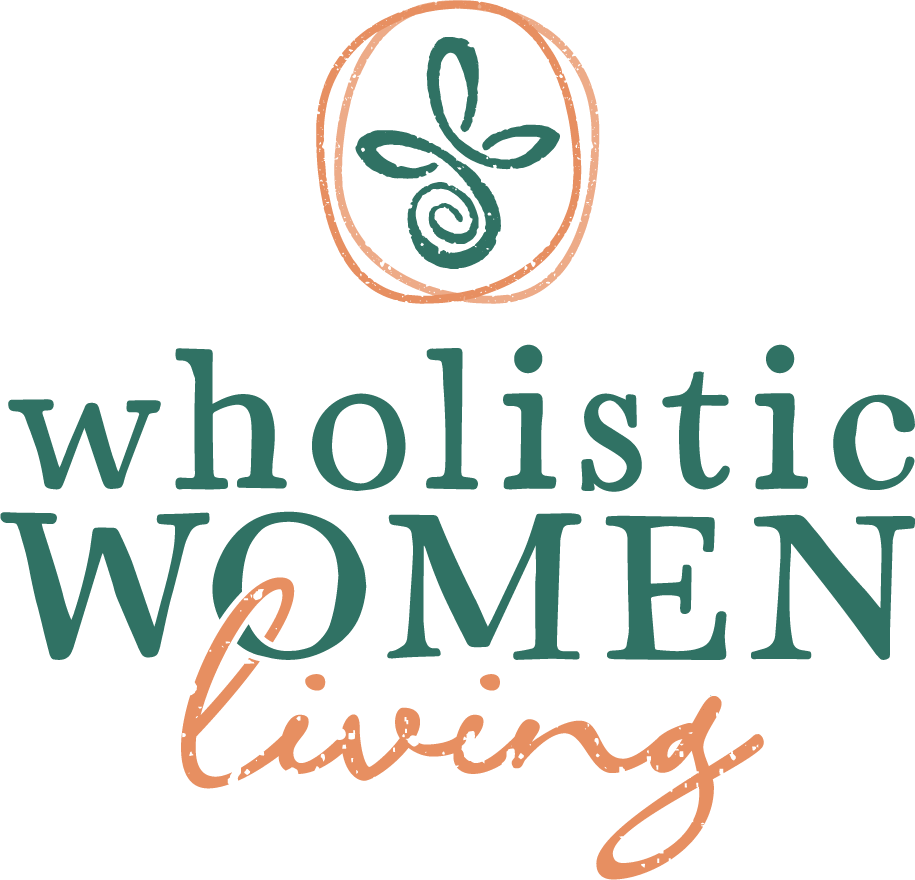
by Carol deLaski | Apr 16, 2019 | Business, Professional Development, Retreats
Have you ever wondered if team building events are worth the investment? How would developing your people impact the overall success of your organization?
Workshops and seminars are great short-term solutions to teach new skills and strategies. A corporate retreat, however, offers greater opportunities to simultaneously reward and improve your employees. Going off-site, whether for a partial day or multiple days, has many benefits for your employees and the overall organization.
Team Building
During a typical work day, your staff may interact with a limited number of co-workers. Team retreats broaden connections between diverse employees allowing them to engage with co-workers from other departments or shifts. New bonds are formed as they converse in a different setting. When they return to the workplace, connections made during the retreat will strengthen the overall cohesiveness and effectiveness of your workforce.
Stress Relief
Retreats come in all shapes and sizes. Choose one that will most benefit your team to provide a break from their daily grind. In these increasingly busy times, workers can release tension through a variety of enriching activities such as escape rooms, scavenger hunts, creative art activities, obstacle courses, personal development, and more. Corporate retreats are especially appreciated as a reward after the busy season. Send a message that you appreciate your team, recognize their contributions and want them to unwind and relax.
Focus
Retreat experiences offer fresh perspectives as staff members get away from their day-to-day operations. A customized program can take a high-level view to explore company values, mission, and purpose. Then take a deeper dive into the details to discover what is going well and what could be better from their vantage point. Identify gaps and areas for improvement while celebrating successes. Participants gain new appreciation and knowledge as they listen and learn from each other, as well as from the program facilitators. Retreats offer time to step back and evaluate both individually and collectively.
Improve Engagement
Disengagement remains one of the biggest hurdles in the current workforce with only 33% of US employees engaged in their work. ‘Gallup believes that unengaged employees cost companies between $480-$600 billion a year in lost productivity. What’s worse is that unengaged employees can be toxic because they have the ability to turn customers away, too.’
How do we improve the engagement of our teams? Buy-in (aka engagement) develops when team members can contribute their input and feel heard, acknowledged and validated. They feel part of the team when they know that their opinions matter. Feeling heard and respected goes a long way towards team engagement, even if their suggestions are not acted upon. Team retreats provide a safe space for employees to brainstorm and give constructive feedback. Such experiences contribute to a positive work culture with a more engaged staff long after the retreat is over.
Invest in your people
Building on ‘buy-in’, a team retreat lets your staff know that you value them. Give them the gift of going to a special location or doing a fun activity together. Ask them what they would enjoy most and then make a custom experience happen for them. A special program such as Strengths Based Leadership will not only develop them as individuals but will also enhance their effectiveness at work. A health and wellness coach can help their physical well-being which translates to a healthier (and happier) workforce.
Follow up the retreat experience by offering staff several one-on-one executive coaching or personal coaching sessions to let them know how invested you are in their development.
In summary, team retreats are a wise and worthy investment in the success of your business, non-profit, or community organization. How will you develop your team today?
Today’s author: Carol deLaski, PCC, is a strengths-based executive leadership coach who guides individuals and businesses to be their best. For more information about her coaching services, and her book Lost and Found: Discovering Strength in Love and Faith, visit www.caroldelaski.com or email her at carol@caroldelaski.com

by Carol deLaski | Jul 29, 2015 | Business, Guest Blogging
I excelled on the fast-track by constantly looking for ways to embrace and contribute to the bigger picture. Taking an interest in the bigger picture is what helps advance careers in any field, especially as an industry leader or entrepreneur.
Do you know what differentiates you as someone who truly excels among your colleagues? If you’re seeking to make an impact in your next role, or even in your current position – perform your job well, exude confidence and develop your personal brand as a leader.
Your personal brand is your unique promise of value. It separates you from your colleagues within your industry. Development of your personal brand is about understanding yourself and knowing what makes you unique and different.
Today, competition for top jobs has become more and more challenging. Therefore, distinguishing yourself and managing your brand is important for achieving your professional goals.
• Differentiate yourself from your peers – Find ways to confidently express your unique attributes while at work. This can be done by staying true to your authentic work style such as being organized, creative, innovative or confident when carrying out assignments.
For example, the Apple brand is known for innovation, therefore, resourceful employees at Apple find solutions to challenges by innovating their way out of predicaments.
• Create opportunities and get results – Try something new and expand your comfort zone. Rise to the challenge on a side project or new initiative and go above and beyond.
Rather than waiting for an opportunity to come to you, realize that it’s up to you to take action. Use networking within your organization to look for ways to work cross-functionally with other teams and identify new projects outside of your role that you might be interested in, and volunteer to take on that project as a way to stand out.
Discover problems in need of solutions that align with your expertise and be a brand builder who embodies your brand as an asset and investment in your future.
• Get noticed and be known for something specific – Use your skills, emotional intelligence, talent and energy to shine at work. Become your best advocate and know how you bring value to your company.
As a former human resource leader at Nordstrom, opportunities arose where there were two or more opposing views. My strength in negotiation would result in two (or more) parties satisfied with the outcome, which is not often easy to achieve. I became known for finding acceptable middle ground.
Be original, and play to your strengths. How well do you understand the differentiated value you deliver at work as your most powerful asset to serve others distinctively, stand out and excel professionally?
Written by Heather Nunley, Business Coach and Personal Brand Consultant at Brilliance Work Consulting. Heather can be reached via email at heather@brilliancework.com
Save

by Carol deLaski | Aug 13, 2014 | Business, Kelye Rouse-Brown
“Lean towards joy and listening, and away from giving advice.”
That was the message to kick off my weekend retreat at Kripalu in the beautiful Berkshires area. I have always been interested in learning about positivity and happiness so I joined Dr. Maria Sirois on Introduction to Positive Psychology along with my oldest dearest friend Susie that I have known for 40 years. Many of you that know me have said why you would want to learn about happiness and positivity since you are that way. For me it was simple, learn some of the statistics around the benefits of these themes in life that I am so passionate about and pass along. Yes, it was a little scientific experiment I took in a relaxing environment and came away renewed with more spirit!
Positive psychology was referred to as the scientific study of optimal human functioning and officially launched as a field in 1998. Dr. Tal Ben-Shahar first taught a seminar at Harvard on this fairly newer topic in 2002 with 8 students enrolled and 2 dropped out. The objective was what psychology can teach us about leading happier, more fulfilling lives. The following year the class went public and 380 students signed up. The evaluations showed the class improved the quality of one’s life. Well, the next time the class was offered it grew to 855 students enrolled, which made it the largest class at Harvard University.
A few years ago I did a workshop on “Don’t Worry, Be Happy” that got me thinking about how to help others lead a happier life. It’s no surprise more often we hear people focus on the negative or remember negative experiences more than positive and that’s in part how positive psychology came about. Psychologists focus on how to help human problems and course correct versus why people are happy and build on that. There have been many positive psychology teams that go into companies to create a balance and shift and help turn a “positive” profit. So in business, positivity equals profit.
As someone who has always been in human resources and the people business, I can’t help but get excited about this field. Guess what the percentage of genetics and intentional activity are in determining happiness? Yes, it’s almost 50/50. To be more exact fifty percent of our happiness comes from our genes and forty percent from our intentional activity, with the exception of 10% are life circumstances says Sonja Lyubomirsky. Happiness is not out there for us to find, it’s in us to find. I love the quote from Abraham Lincoln,
“Most folks are as happy as they make up their minds to be.”
It’s true! We choose to change our negative state of mind to push through to find happiness.
Some of my favorite happiness boost are expressing gratitude, cultivating optimism and acts of kindness. There is a long list by Sonja Lyubomirsky that goes on to taking care of your body with steady exercise and meditation. One I am working on and will continue with our Be Whole, Be Calm event designed to relax your mind and walk a meditative labyrinth. I walked the labyrinth at the Kripalu Wellness and Yoga center and was reminded to pause and savor life’s joys and listen as advised the start of my weekend. These retreats fill my happiness bucket one day, one weekend at a time.
Today’s author: Kelye Rouse Brown is an executive coach, conference speaker, HR expert, and seminar leader on employee and management training. Through her company, KRB Customized Training Solutions, she specializes in communications and leadership, career coaching, and result driven solutions for hospitality, healthcare and service oriented clients. You can reach Kelye at kelye@krbtrainingsolutions.com or visit her website http://home/wholisu6/dev.wholisticwomanretreats.com.krbcustomizedtrainingsolutions.com
Save

by Carol deLaski | Jul 30, 2014 | Business, Courage, Fear, Guest Blogging, Personal Development, Professional Development
We are happy to welcome Kim Dow, our fabulous Wholistic Woman Alliance Partner, graphic designer, and today’s guest blogger as she shares what she learned at the Be Courageous Retreat.
I have a healthy fear of heights. It’s cool, I’m not afraid to admit it!
But, recently, I set a goal for myself and conquered that fear. I joined our client, Wholistic Woman Retreats, for their annual “Be Courageous” event at Upward Enterprises, a zip lining and ropes challenge course in Buckeystown, MD.
Amidst the zipping and free-fall swing fun, lay the “Leap of Faith” (possibly mistaken as the Leap of Death…but whatever). A towering site where you climb up a single telephone pole, using just small hooks to brace your feet and cling to with your hands. Once you reach the top, you have to maneuver yourself around on a small plateau to face yourself outwards. Then, you jump off the top of the pole, aiming for a trapeze hanging in mid air. No biggie, right? WRONG!
Holy. Crap. Despite having done this challenge once several years ago (or maybe because of it), and knowing that I was safely harnessed in…my heart was still beating, my legs were still shaking and my brain was still screaming at me “Abort, Abort—We Are Up WAY Too High!” But, I kept my goal in mind and found the strength and inner will to keep climbing—to keep going for it and conquer the fear.
This experience is no different than what we face as entrepreneurs. Business owners face many fears—fear of failure. Fear of where your next job or payment will come from. Fear of change. Fear of not being able to pay your employees or yourself. Fear of not being good enough. Fear of the unknown. I think it’s safe to say that starting and owning your own business can, at times, be downright scary. But, you always have to try and overcome those fears—sometimes even embracing them—and keep moving forward to your end goal(s). To continuously push yourself and to keep moving forward, knowing those fears and the risks are just a part of the journey.
For me, back on that 20-something high (okay, so I don’t really know how high it was, but let me tell you when you’re at the top of it, it feels twice as high as it looks!) it wasn’t the jumping off part that was the scariest. It was the climb. Especially when I was almost at the very top…that was the hardest part. And isn’t that the same with our business as well? It’s the planning, the strategizing, all the hard work that leads us to that “top” (whatever point or end goal that may be for you). Once you’ve made that climb, it almost seems easy to take that final “Leap of Faith” and jump off!
And hey, it’s okay if you have to take a break on the way up—catch your breath, gather your thoughts, adjust your climbing strategy. But, just be sure to keep climbing, because it’s worth it!
Another important aspect of my Leap of Faith experience was the positive encouragement and cheering received from all those watching (and the fact that I, in turn got to cheer others on when my turn was over). The encouraging, supportive words truly made it easier to keep going! And I believe this is also a very important aspect of entrepreneurship. Surround yourself with supportive friends, family and colleagues—it definitely can make a huge difference, especially when you doubt yourself!
 A special thank you to Wholistic Women Retreats and the coaches who plan this amazing event each year. And another huge thanks to Clive Felgate and his amazing team at Upward Enterprises. I can’t wait for next year’s adventure!
A special thank you to Wholistic Women Retreats and the coaches who plan this amazing event each year. And another huge thanks to Clive Felgate and his amazing team at Upward Enterprises. I can’t wait for next year’s adventure!
Kim Dow is owner of Kalico Design, a creative and wholistic graphic design firm in Frederick, Md. You can learn more about Kim and her company by visiting www.kalicodesign.com
Thank you to Mary Kate McKenna Photography for great shots of this fun event!
Save

by Carol deLaski | Jun 11, 2014 | Business, Carol deLaski, Change, Professional Development
Do you ever struggle with balance…at work or at home? What would a healthy, interdependent, relationship with your co-workers or your life partner look like?
Interdependent may not be a word that we use very often, but I believe it holds the key to successful work and personal relationships. To me, it’s that sweet spot where we can rely on others and on ourselves in a healthy balanced way. It’s when we know what we need and can take care of ourselves…. but we also know when we need help, and who or what we need to complement or support us…. and we aren’t afraid to ask for that assistance. Interdependence may mean something different to you. Perhaps it is best understood by first looking at what it is not. We can learn about the delicate balance of interdependence by recognizing what it means to be overly dependent or overly independent.
Unhealthy dependency is recognizable when these three limiting beliefs appear in emotionally charged interactions.*
- When we believe that others have the power to make us feel good or bad;
- When we focus on another person’s needs as a substitute for our own needs;
- When we become preoccupied with getting another person to change in some way so that we can feel happy, loved, whole, comfortable, wanted, content, etc.
These limiting beliefs are red flags that we may be losing ourselves and relying too much on other people; giving our personal power away.
On the other end of the spectrum, there are different challenges that arise from being too independent; such as isolation, loneliness, fear, emotional distance and difficulty asking for help, to name a few.
I am familiar with both ends of this spectrum, and perhaps you are as well. There are often very good reasons why we go to these extremes, but we won’t get into that here. Instead, I want to ask: What have you found that brings you back to center when you get off balance? What course corrections do you make when you find that you’ve wandered into being overly independent or overly dependent?
For me, I’ve learned to restore balance with three practical steps: Stop, Look, and Listen. When you feel off balance in a professional or personal relationship, I suggest that you try these three steps.
Stop your habitual reactions: stop or slow down whatever reaction you normally do.
- If you typically withdraw, stay present.
- If you typically close your heart, try to say open.
- If you habitually withhold, disclose.
- If you tend to attack, take a deep breath and be still.
Look at yourself…not at the other person, and ask:
- What part of my reaction or perspective is keeping me defensive?
- What part of me is threatened in this situation?
- Am I feeling shame, humiliation, or embarrassment?
- What support do I need to tolerate this experience?
Listen deeply. Dive below the surface disturbance to connect with your core energy. Listen to the part of you that is unaffected and larger than your reaction. Return to the conversation more open and less attached to protecting yourself.
These three simple, yet powerful, steps help me pause and regroup when highly charged interactions occur. They interrupt my habitual reactions and allow me to engage with others in ways that can lead to healthy interdependence.
Give them a try the next time you find yourself off balance and out-of-sorts at work or at home. I suggest that you share your observations with someone else to give voice to your impressions and to cement your understanding.
Feel free to write to me or post a comment here. Look for more strategies on healthy interdependence in my next blog.
Good luck and I look forward to hearing from you!
Today’s author: Carol deLaski, PCC is a speaker, author, and coach specializing in strengths-based leadership coaching. Write to her at Carol@CaroldeLaski.com or visit her website: www.caroldelaski.com for more information about her speaking and coaching services. You can learn more about interdependence in her book, Lost and Found: Discovering Strength in Love and Faith.
*Some of the material from this blog has been summarized from an excellent book on relationships, Undefended Love by Psaris and Lyons, which I highly recommend.
Save
by Carol deLaski | Apr 23, 2014 | Business, Laura Hall, Professional Development
“Everyone is a genius. But if you judge a fish on its ability to climb a tree, it will live its whole life believing that it is stupid.” ~ Albert Einstein
Everyone is a genius! You are a genius. Don’t believe me!?! Well, why would you? I’m just Laura Hall, but how can you deny the fact when Albert Einstein tells you that everyone is a genius, and guess what? You are included in everyone. So there! You are a genius!
You know who else is a genius?
Your teenager, you know the one I’m talking about – the one who is making questionable decisions right now – is a genius. Your spouse is a genius. Yes, even though they forget to take out the trash, or buy you a gift on your birthday, or leave their socks in the family room despite you constantly reminding them to please take their socks to the laundry room, or…(you get the point). And you know that person you work with, the employee or coworker who you have to constantly remind about protocols and procedures, yes, they too are a genius. How can I say that you ask? Easy! Albert Einstein told me 🙂
Have you ever heard of the book StrengthsFinder 2.0 by Tom Rath? It’s a book I use often with my life coaching clients. The book is based on the idea that people have several times more potential for growth when they invest evergy in developing their strengths instead of correcting their deficiencies. In other words, that they stop tring to be a tree climbing fish and instead focus on developing their ability to breathe under water. Are you living your life with a focus on developing the things that you are naturally gifted at, or are you trying to swim upstream? Are you encouraging your team, those people around you on a daily basis – your family, your co-workers, your employees – to do the same or are you asking a fish to climb a tree and then wondering why you are all so frustrated? There is another way. Start looking for the genius in yourself as well as in those you associate with. I promise you, it is there. Then begin asking yourself, how can this genius be used to bring more effectiveness, harmony, peace (or whatever else you think your life or business could use more of) to what is going on right now.
Exactly one week from today, on Wednesday April 30th, I will be leading a workshop right here in Frederick for people who are ready to join in the conversation about what’s right with people and to discuss how looking at strengths can impact you business and your life. I hope you will consider joining me. Click here for details.
Today’s author: Laura Hall is an iPEC certified life coach whose business, Hall Coaching, was established in 2009 with the vision of waking women up from the nightmares of “How did I get here?” and, “Is this as good as it gets?”, so that they can begin creating and living the life of their real dreams, hopes and desires. She offers both one on one as well as group coaching services. She can be reached at laura@hallcoaching.com or check out her website at www.hallcoaching.com
Save






